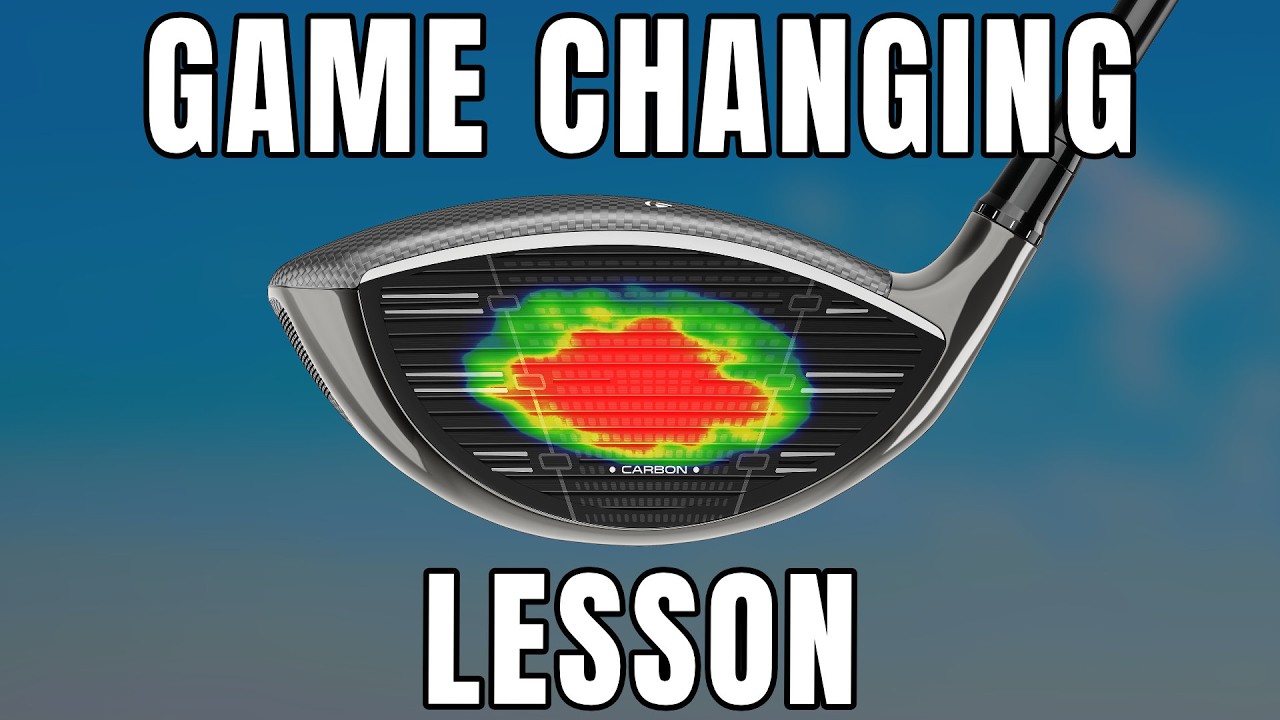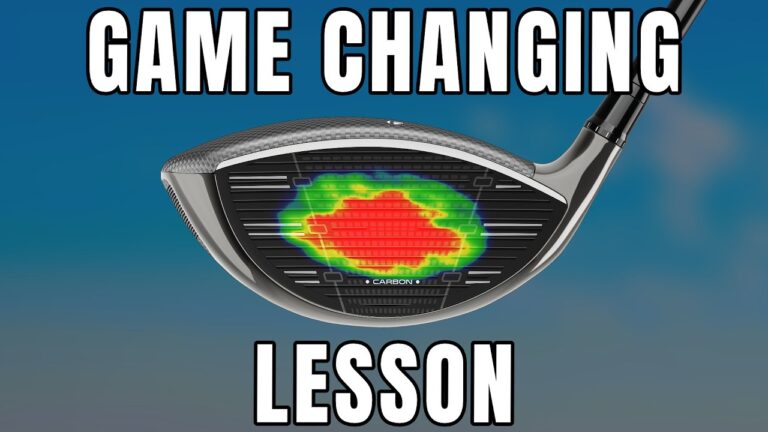 Tired of inconsistent golf drives and frustrating slices? Discover how a few adjustments can turn your golf game around. Gain confidence with your driver by learning to make a bigger shoulder turn, maintain a wide right arm, and control your clubface like a pro.
Tired of inconsistent golf drives and frustrating slices? Discover how a few adjustments can turn your golf game around. Gain confidence with your driver by learning to make a bigger shoulder turn, maintain a wide right arm, and control your clubface like a pro.
Table of Contents
- Diagnose Issues with Your Golf Driver Swing
- Create a Powerful Shoulder Turn
- Maintain a Wide Right Arm for Control
- Engage Your Lower Body for Effective Sequencing
- Optimize Tee Height and Attack Angle
- Achieve a Neutral Grip for Clubface Control
- Practice Drills for Enhanced Clubface Control
- Integrate Techniques for a Perfect Drive
- Build Better Golf Habits with Short Sessions
- Troubleshoot Common Driver Mistakes
- Maintain Your Improvements on the Course
- FAQs: Biggest Driver Mistakes
- Assess Shoulder Turn in Your Swing
- Optimal Tee Height After Swing Adjustments
- Adjusting the Right Hand for Clubface Control
- Drills for a Neutral Golf Face
- Timeframe for Changing Your Driver Swing
- Impact on Iron Play and Driver Performance
Step 1: Diagnose Issues with Your Golf Driver Swing
Many golfers mistakenly believe swing issues stem only from impact factors, such as ball position and clubface alignment. More often, these issues begin earlier in the swing with a lack of body movement. Over-reliance on the arms can undermine drive consistency. Check your shoulder and torso turns during your backswing if you struggle with slices or inconsistent shots.
- Recognize the feeling of a short backswing.
- Notice if the right arm drifts across the body during transition.
- Observe if the hips and right knee drift instead of rotate.
Step 2: Create a Powerful Shoulder Turn
To square the clubface naturally, allow your shoulders to turn and create room for the driver’s longer shaft. Emphasize a full shoulder turn over arm lifting to align the club’s path effectively. Here’s how:
- Start with your regular stance and feel the shoulder wind.
- Aim to position the right shoulder under the chin at the backswing peak.
- Practice half-swings, focusing on shoulder turns, not arm lifts.
- Use video or peer observation for feedback on your coil and turn balance.
Step 3: Maintain a Wide Right Arm for Control
A collapsing right arm pulls the club out of control with excessive manipulation. Keep it wide to create a stable, predictable swing arc. Here’s why:
- Maintains a larger and more stable swing arc.
- Reduces unnecessary hand action for consistent clubface positioning.
- Enhances body-driven downswing sequencing for added power.
- Practice slow swings focusing on shoulder rotation and right arm extension.
- Pause at the top and ensure visibility of the right thumb without the arm collapsing.
- Utilize aids or place markers to encourage body rotation over lateral movement.
Step 4: Engage Your Lower Body for Effective Sequencing
A stiff lower body can lead to lateral hip drift and reduced power. Allow the lower body to work harmoniously with the torso for optimal sequencing. Here’s how:
- Feel pressure in the inside back leg at address; rotate instead of sliding hips during downswing.
- Use drills to pause and initiate downswing motion with the hips, allowing arms to follow.
- Place a stance marker to reinforce correct rotational movement.
Step 5: Optimize Tee Height and Attack Angle
More shoulder rotation shifts the swing’s lowest point forward. Align tee height to enable slightly upward club impact, enhancing launch. Here’s what to do:
- Raise the tee for shoulder turn and arm width improvements, enabling a sweeping motion.
- Make adjustments carefully to avoid topping or mishits.
- Use a launch monitor to assess and refine attack angles, aiming for a slightly positive one.
Step 6: Achieve a Neutral Grip for Clubface Control
Quick grip adjustments can stabilize the clubface. An overactive right hand can prematurely close the clubface. Achieve a balanced grip with these steps:
- Shift the right hand more into the fingers, allowing natural wrist set without overpowering the face.
- Keep the right thumb slightly to the grip’s left, stabilizing and reducing flip chances.
- Ensure shoulder positions remain correct with changes.
Step 7: Practice Drills for Enhanced Clubface Control
Train by hitting shots aimed opposite to your usual miss, refining clubface handling. Here’s how:
- Set up for a standard shot, emphasizing shoulder turn and wide right arm.
- Deliberately set the clubface to the opposite side of normal errors.
- Execute a series focusing on face and rotational awareness without distance concerns.
Step 8: Integrate Techniques for a Perfect Drive
Link grip changes, shoulder turn, arm width, and tee height for optimal performance. Follow this checklist:
- Adopt a neutral grip with right-hand placement in the fingers.
- Modify tee height for upward swing and positive attack.
- Concentrate on turning, not lifting, your shoulders during backswing.
- Lead downward motion with hips, avoiding manual arm swings.
Step 9: Build Better Golf Habits with Short Sessions
Focus on quality over quantity with short, targeted sessions. Here’s a practice routine:
- Warm up with gentle shoulder and hip exercises.
- Attempt swings aimed at shoulder turns and maintaining width.
- Practice hip rotation and downward initiation without arms leading the swing.
- Use a slightly raised tee, rehearsing face angles with focus swings.
Step 10: Troubleshoot Common Driver Mistakes
Common issues, such as leftward to downward shots, stem from grip or swing feelings. Address these efficiently:
- Persistent left shots indicate overly active right grip — adjust alignment.
- Continual rightward balls may suggest a sensing mismatch — use incremental video feedback.
Step 11: Maintain Your Improvements on the Course
Use on-course routines and cues to sustain practiced changes:
- Visualize shoulder turns and right arm width before addressing the ball.
- Practice swings with rotational and extension awareness.
- Check grip or tee adjustments as needed.
- Mentally remind yourself to “turn, don’t flip” for a hands-free swing.
FAQs: Biggest Driver Mistakes
Relying excessively on arm action undermines swing consistency. Ensuring a fuller shoulder turn with a wider right arm leads to a repeatable and powerful drive.
Assess Shoulder Turn in Your Swing
Check the backswing for arm lift dominance. Ensure the right shoulder rotates under the chin — lateral hip drift indicates insufficient shoulder rotation.
Optimal Tee Height After Swing Adjustments
Raise the tee incrementally after enhancing rotation arcs for the swing. Align the tee for upward club travel at impact without topping.
Adjusting the Right Hand for Clubface Control
Shift the right hand into the fingers with the thumb left of the grip to balance the face. This neutralizes overly dominant hand action.
Drills for a Neutral Golf Face
Engage in practice aiming opposite usual misses to train the club’s face differently.
Timeframe for Changing Your Driver Swing
Focus on short, quality sessions over several weeks for efficient change absorption. Consistency in practice guides lasting on-course improvement.
Impact on Iron Play and Driver Performance
Yes, the improvements in rotational skills and face control support both driving and iron play for overall better performance.
Consistently applying these techniques will transform your golf driving performance. Focus on shoulder rotation, arm position, active lower body, grip, and tee height for optimal results. With purposeful practice, your golf game will see significant strides in power and accuracy.


0 Comments